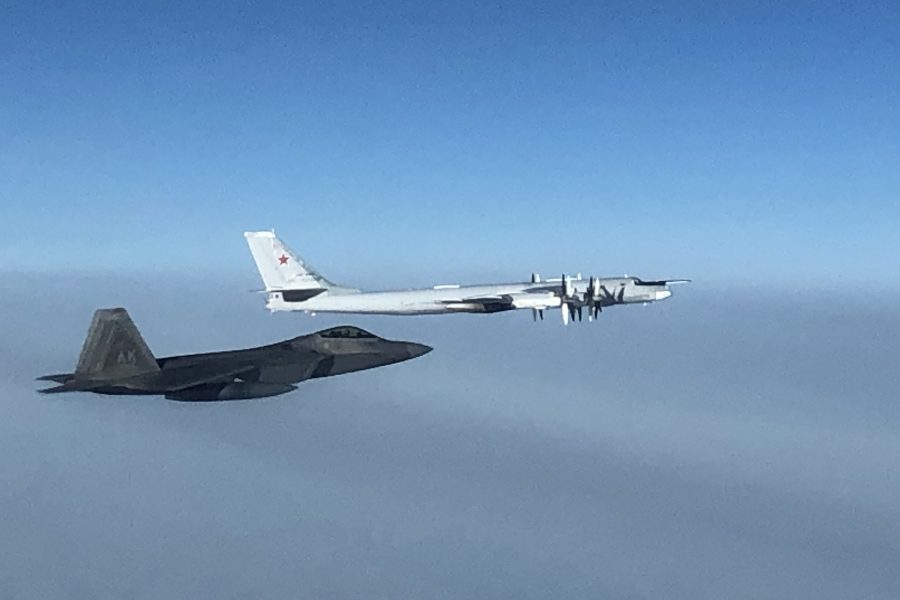North American Aerospace Defense Command F-22s intercepted a Russian air package comprised of two Tu-95 Bear bombers and two Su-35 Flankers, supported by an A-50 Mainstay Airborne Warning and Control aircraft, on Oct. 19, U.S. Northern Command said.
The Russian aircraft “loitered” inside the Alaskan Air Defense Identification Zone, or ADIZ, for about 90 minutes and came “within 30 nautical miles of Alaskan shores,” NORTHCOM reported on Oct. 20. None of the Russian aircraft “entered United States or Canadian sovereign airspace.”
The F-22s, from Joint Base Elmendorf-Richardson, Alaska, were supported by an E-3 AWACS and KC-135 refueling aircraft. A NORTHCOM spokesman said there were no dangerous or unprofessional maneuvers by the Russian aircraft.
Russia has increased the tempo of its long-range bomber flights over the last year and has added more elements, like fighter escorts and now the Mainstay AWACS to such missions. A Mainstay was part of a package intercepted in the same region in June.
The intercept was conducted as part of the ongoing Noble Eagle homeland defense mission. “The response to potential aerospace threats does not distinguish between [Canada and the U.S.] and draw on forces from both countries,” NORAD said.
Russian state-run news described the flight as a pre-planned 11-hour mission “over the neutral waters of the Chukchi, Bering, and Okhotsk Seas, as well as the Northern part of the Pacific Ocean.” It described the Tu-95s as “strategic missile carriers,” and said the aircraft were escorted by F-22s “at certain stages of the route.”
In addition to the Su-35s, Russian state media said the bombers were also escorted by MiG-31 Foxhound interceptors “of the Pacific Fleet.” The Russian news release said the flights are “carried out in strict accordance with the International Airspace Rules.”
Russia released video of the intercept, which did not show any aircraft other than the Tu-95s and F-22s.
